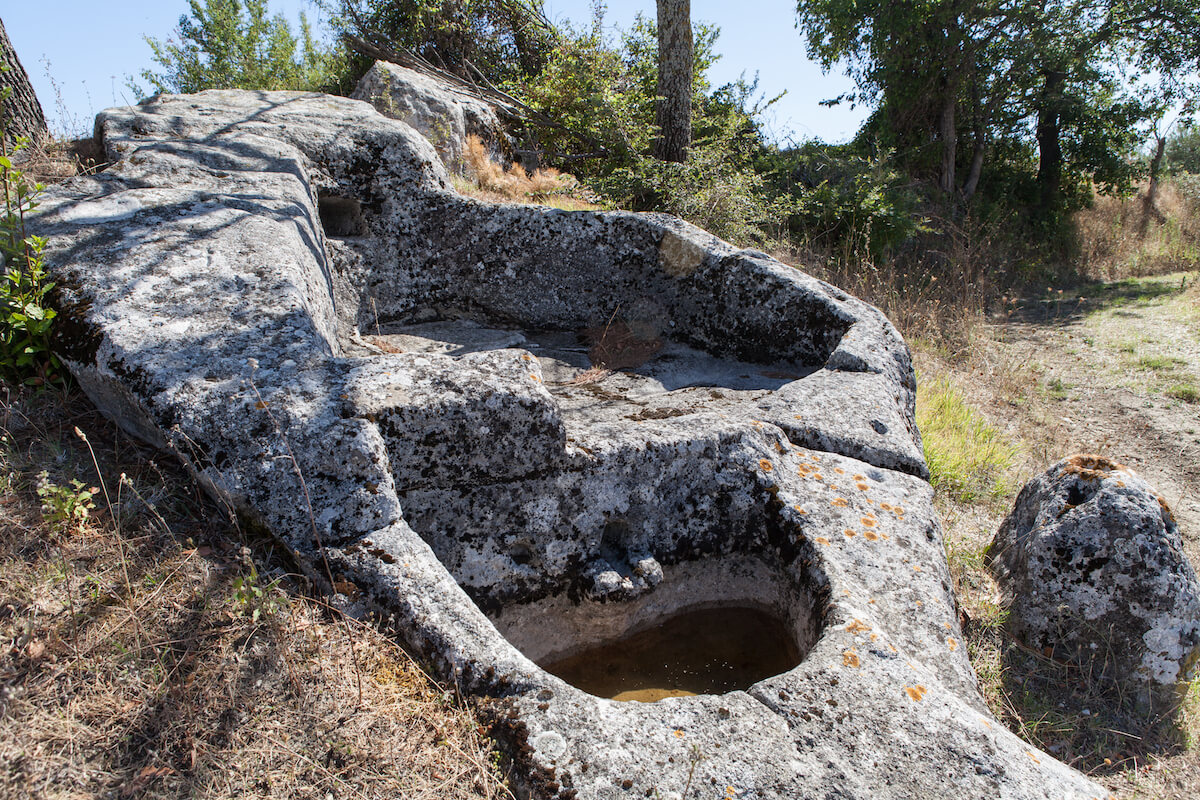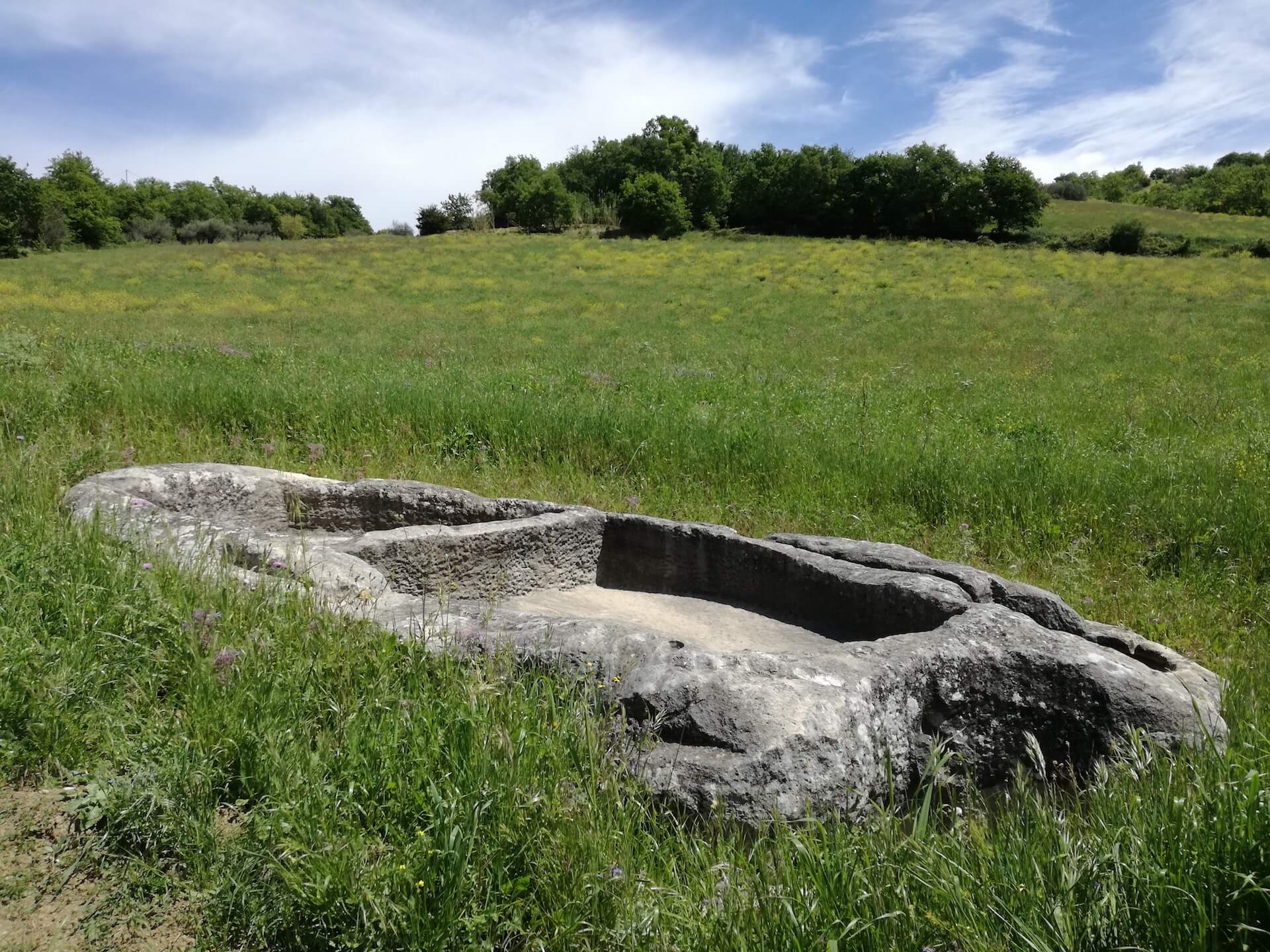The "Vasche": the rupestrian basins for grape-crushing
These stone basins for the crushing of grapes are an extraordinary peculiarity of our territory, witnessing a recent past in which the cultivation of the vine was the main economic activity in the area.
In ancient times it was common to create outdoor pressing tanks near the vineyards. This tradition originated during the Greek colonisation of southern Italy.
The rupestrian basins - or palmenti - are basins for pressing grapes, hand-carved into the stones emerging from the land. All the palmenti have a system of separate tanks, and drains for must collection; a screw press was also installed on some to facilitate the work.
In the 1748 land registry of Pietranico we read that almost every family owned a vineyard. Most of these were located in the area called "Caprera", where our farm lies today.
The origin of the basins is uncertain, because dating back a carved stone is extremely difficult. We know for sure that the year "1687" is imprinted on a tank.
Usually, though, the origin of such tanks is placed in much more remote times, even back to the stone age.



